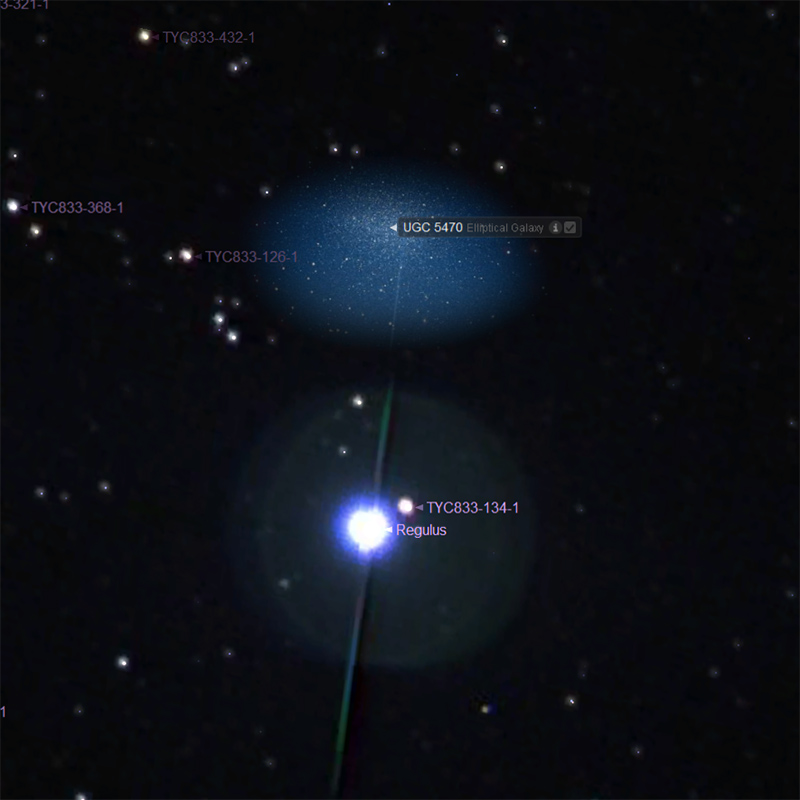Regulus

Regulus, designated α Leonis (Latinized to Alpha Leonis, abbreviated Alpha Leo, α Leo), is the brightest object in the constellation Leo and one of the brightest stars in the night sky, lying approximately 79 light years from the Sun. Regulus appears singular, but is actually a quadruple star system composed of four stars that are organized into two pairs. The spectroscopic binary Regulus A consists of a blue-white main-sequence star and its companion, which has not yet been directly observed, but is probably a white dwarf. HD 87884 is separated from Regulus by 176″ and is itself a close pair. Regulus, along with 5 slightly dimmer stars Zeta Leonis, Mu Leonis, Gamma Leonis, Epsilon Leonis and Eta Leonis have collectively been called 'the Sickle', which is an asterism that marks the head of Leo.
Facts about Regulus by Keith Turnecliff
Regulus is actually a quadruple star. Though technically a dwarf, Regulus is still visually 150 times brighter than the sun.
Note the eliptical galaxy just above it.

This star chart represents a view from Long Itchington for mid March at 10pm.
Credits: Image courtesy of Starry Night Pro Plus 8, researched and implemented by Keith Turnecliff.